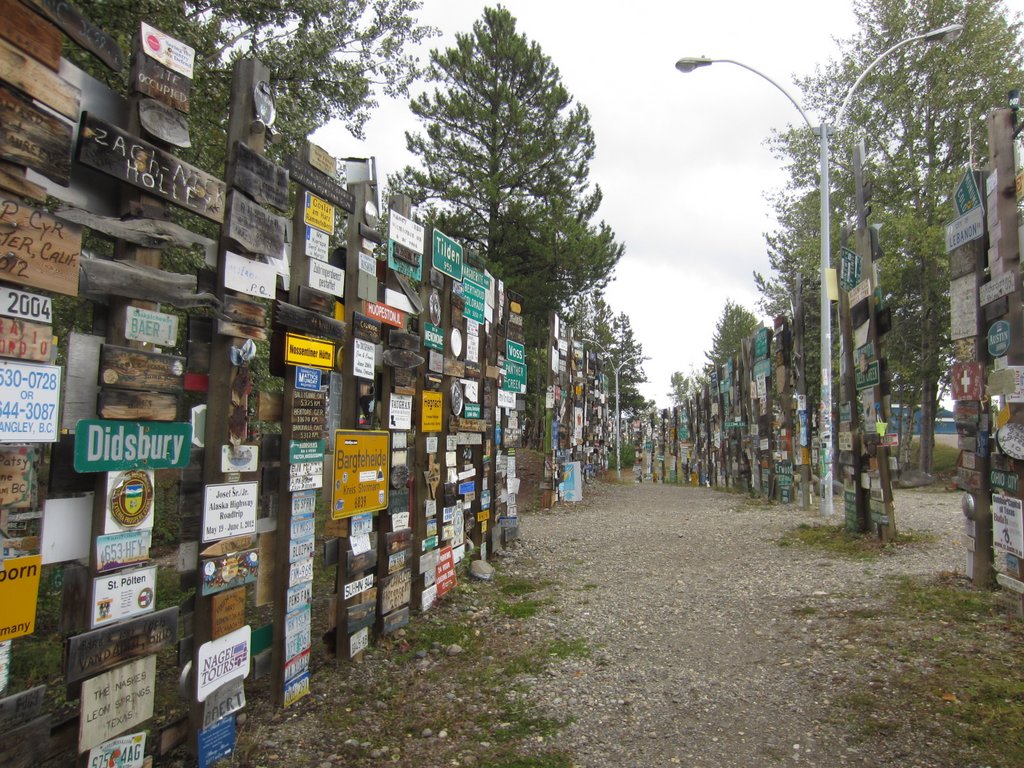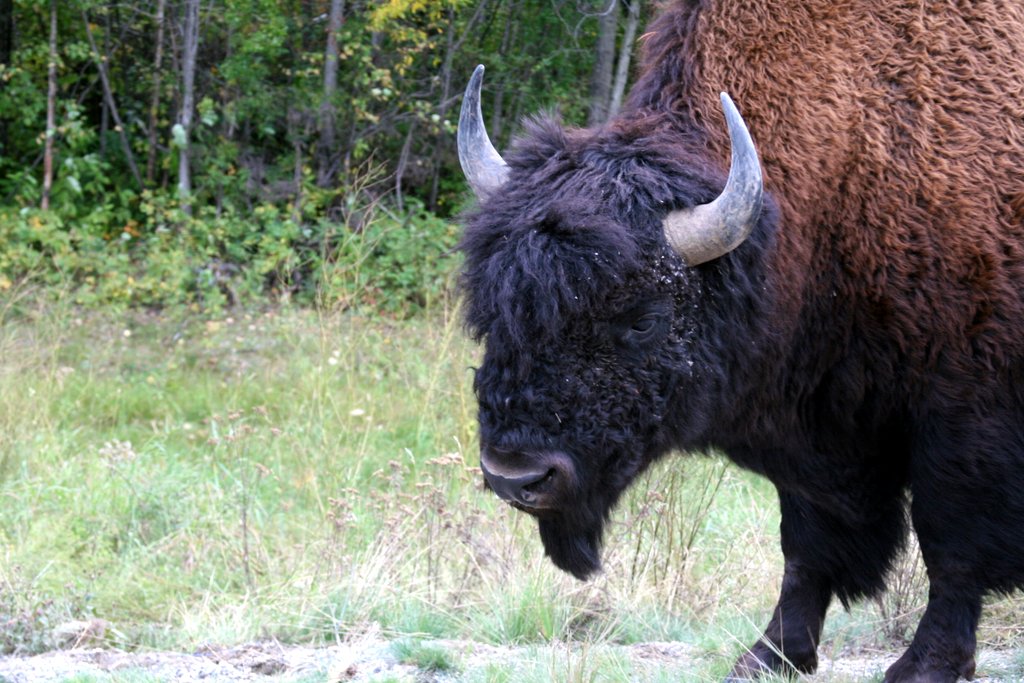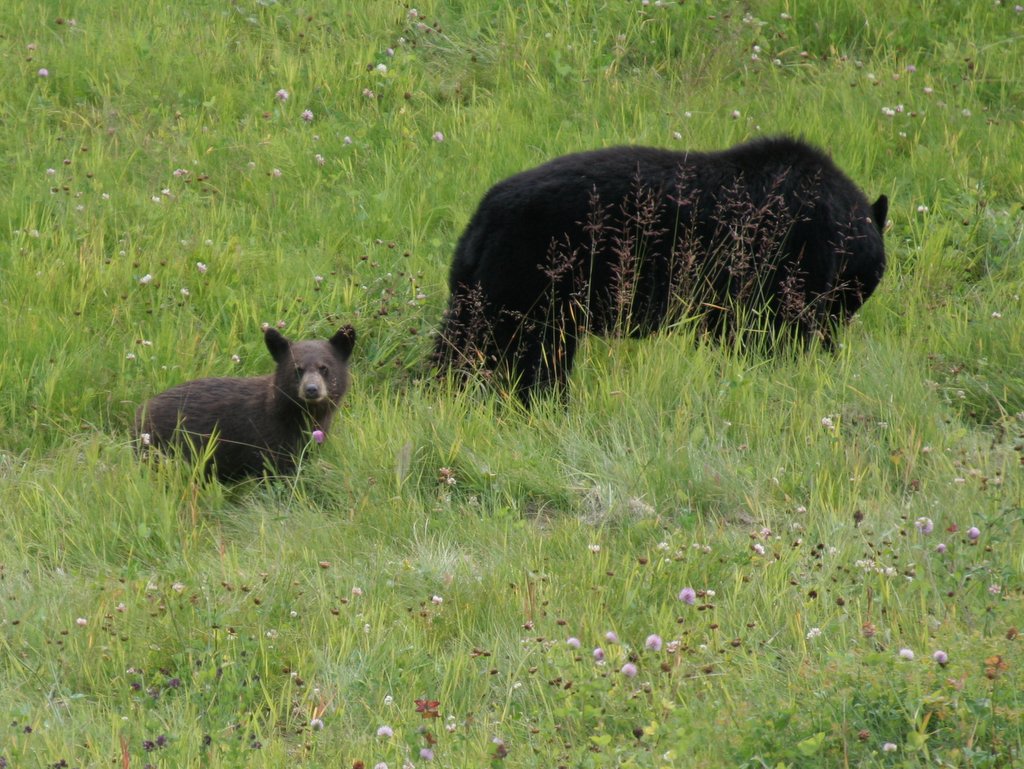Our plan for after Drumheller was to make our way to Theodore Roosevelt National Park in North Dakota (mostly because Ma wanted to see North Dakota). It was a long way from Drumheller to North Dakota, so Ma studied the map looking for somewhere to stop in between and noticed Grasslands National Park in Saskatchewan, just north of the US border. I was very hesitant to stop in Saskatchewan, but Ma insisted we give it a try. It turned out to be a great stop.
The drive through Grasslands National Park to the campground was spectacular: rolling prairie with dramatic valleys, bison, and a huge prairie dog town, the first that any of us had ever seen in the wild. The campground was beautiful too, with widely spaced pull through spots, great views, and even a teepee. The fee structure for the campsites was the oddest we have seen: $15.70 per night (all other campgrounds have whole dollar fees), and the same fee for sites with and without electric hookups (all other campgrounds charge at least a $10 premium for electric sites). Since there was no extra charge we opted for an electric site, only the second or third one of our whole trip.
While at Grasslands we finally got some summer weather for the first time since we left Tucson on June 1. All through the north country it was almost always at least partly cloudy and the temps never got out of the low 70s at best, and towards the end it was in the low twenties at night and forties during the day. Now in southern Saskatchewan we had cloudless skies and temps getting up into the low 80s.
Grasslands was also my first chance to use the compact Orion Starblast telescope I had purchased just for the trip. All summer in the north country there was no full darkness (we literally didn’t see stars for about two months), and even if there had been it would have been cloudy. At Grasslands the skies were dark and cloudless, and Big Kid and I were able to observe a number of galaxies, nebulas and even Uranus. Ma and I also got our final glimpse of the northern lights (sorry we did not wake you, Big Kid).
After a couple days at Grasslands we studied the map again, and noticed an Army Corps of Engineers campground at Fort Peck Dam in Montana that was about halfway to Teddy Roosevelt NP. We had heard good things about Army Corp of Engineers campgrounds so we decided to give it a try.
Leaving Grasslands we headed south for the border on a very lightly traveled two lane farm road. After our four very laid back border crossings into the US in the north country (Hyder, Skagway, Haines and the Alaska Highway) we expected that this would be another two minute stop at a tiny and lightly staffed station. Nope. The first surprise was the size of the station, which seemed much too large for a farm road where we hadn’t seen another vehicle for the past half hour. Then there was the barrage of terse questions about exactly what we had on board, with an emphasis on fruits, vegetables and dog food. Fifteen minutes later we were on our way again, minus the mandarin oranges and apples whose provenance we could not prove. The Customs and Border Protection officer graciously allowed us to keep the dog food of undocumented provenance, though he said he would note on our record that we had been informed that all dog food crossing the border must be in its original container.
Fort Peck Dam also turned out to be a great stop. Although none of us had ever heard of it before, Fort Peck Dam was a huge Public Works Administration project during the Great Depression. The project employed around 10,000 people and spawned a number of boom towns with names like New Deal and Delano. The concrete spillway structures were on the cover of the first issue of Life Magazine.
We stayed at the Downstream Campground at the base of the massive earthen dam, which just looked like a big grassy hill from down below. The campground was in a lovely grove of cottonwoods with a lush green lawn, and had three playgrounds. Even better, we paid only $8 a night, and the sites all had electricity for no extra charge (probably because there is big hydroelectric power station at the dam). The electricity came in handy because our belated summer weather continued with temps in the nineties and we had to run the rig’s AC for the first time on the trip.
Right next to the campground was a very nice interpretive center that had dinosaur skeletons and exhibits about the construction of the dam. They even had crayons and coloring sheets for Little Kid. Down the road, at one of the dredge sites, we got to cool off with a swim.
The only downside to the campground, and it was a big one, was mosquitoes; thick clouds of them. I made the mistake of going out in shorts, and at one point there were probably about two dozen feeding on my legs simultaneously. We had lucked out in north country, only getting bad mosquitoes in two campgrounds in BC, but our luck ran out at Fort Peck. If it wasn’t for them we probably would have stayed at Fort Peck for a long time, but as it was we only stayed three nights.












